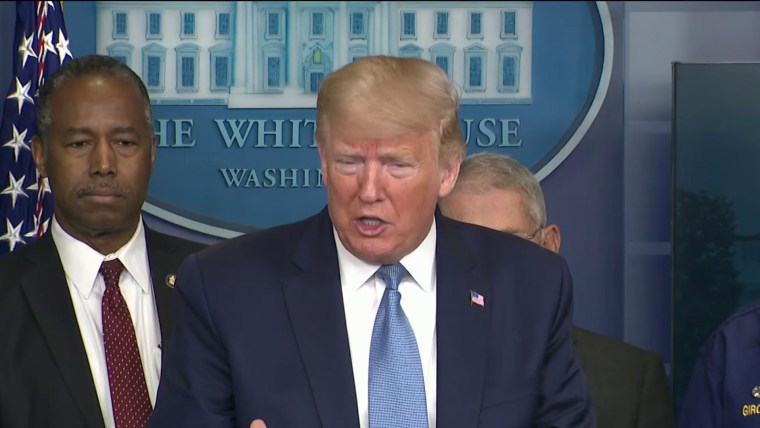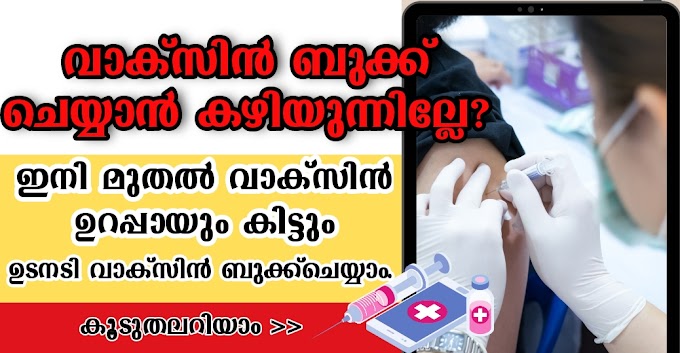WILMINGTON, Del. — The coronavirus presented DuPont, the chemical giant based here, with a golden business opportunity.
In January, the company convened a crisis team to figure out how to ramp up global production of personal protective equipment, including suits made out of its patented Tyvek material, which normally sell for about $5 apiece to hospitals. By early March, as the disease began to spread in the United States, DuPont's factory in Richmond, Virginia, was cranking out Tyvek.
It usually takes up to three months to ship the material to Vietnam, where it is sewn into body suits, and get it back. When the federal government offered to pay for chartered flights to reduce the roundtrip for 750,000 items to 10 days, DuPont agreed.
Then DuPont sold 60 percent of the protective gear to Uncle Sam while keeping 40 percent for its other customers. The company refused to say how much the Department of Health and Human Services paid for 450,000 suits, but a spokesperson noted that they sell for up to $15 each, three times the amount they fetched before the virus pandemic.
"We actually helped get raw materials supplied from Richmond, Virginia, and we flew that s--- to Vietnam, all so that DuPont could sell us" their products, said one senior federal official involved in the coronavirus effort.
President Donald Trump and the HHS department, which announced the deal earlier this week, described the arrangement as one in a string of massive successes in delivering badly needed medical equipment into the U.S. in expedited fashion.
But for some government officials familiar with the supply-chain end of the coronavirus fight, it was yet another example of Trump's task force serving industry, as the White House tried to corner the market on medical supplies.
For weeks, Trump has resisted pressure to use the full power of his office to temporarily turn the private sector into an arm of the federal government in a national emergency. But he and his lieutenants instead have used the crisis to make federal assets and personnel ancillary to industry, according to NBC's interviews with dozens of public- and private-sector sources involved in various aspects of the coronavirus response.
In doing so, the vice president's coronavirus task force — mostly through a supply-chain unit led by Admiral John Polowczyk and heavily influenced by White House adviser Jared Kushner — has favored some of the nation's largest corporations and ignored smaller producers of goods and services with long track records of meeting emergency needs, according to officials at multiple federal agencies and people familiar with contracting.
They have also operated almost entirely in the dark, releasing few details of their arrangements with the big companies; created a new and convoluted emergency response system; and sown confusion and distrust in the states and among the people who need medical supplies.
There is virtually no accountability for their decisions about how and where to allocate emergency equipment, a vacuum that has produced strong criticism from Democratic congressional officials, who are demanding answers.
The story of the supply-chain group, a power center within the larger task force run by Vice President Mike Pence, is one of chaos, secrecy and ineptitude, these officials said. Governors, local officials and veterans of federal emergency response say it has deeply complicated the national fight against the pandemic.
But the view is much different from the inside. Pence tapped Kushner and his innovation team to help federal agencies increase the scale and expedite the acquisition and distribution of equipment, according to a senior administration official who spoke to NBC on the condition of anonymity in order to provide insight into the group’s mandate and operations.
Rather than creating new layers of bureaucracy, members assigned to the supply-chain task force's issues and data analysis see their work as a vital tool for stripping away obstacles. Right now, Kushner’s group is focused on getting a robust COVID-19 testing plan in place so that American society can be re-opened, as well as rolling out a production schedule for 110,000 ventilators between April 13 and the end of June, according to the senior administration official familiar with its operations.
They may be doing a better job of getting results than telling their story, the source said.
To piece that story together, NBC News spoke to state, local and health system officials who detailed specific instances of federal interference in the delivery of life-saving goods — from California to Michigan to New Jersey — as well as senior and mid-level administration officials and representatives of companies that have benefited from the task force’s actions.
With so many ad-hoc groups purchasing goods and services for the crisis — the White House coronavirus task force, one of its seven subsidiary task forces, or other government agencies — it’s impossible to tell whether taxpayers are getting the best deals possible or are being gouged.
Just as DuPont would not say how much the Tyvek suits cost U.S. taxpayers, one spokesperson for Federal Express laughed when asked what the government is paying for each of the 40 flights the carrier has chartered for the Department of Health and Human Services and FEMA. But one senior government official involved in the response effort said such charter flights can cost as much as $1 million apiece, while comparable Defense Department planes can be borrowed by federal agencies for about $10,000 an hour. A round trip from the East Coast to Vietnam on a commercial flight takes about 41 hours of flying time.
It’s also hard to know which factors are given the most weight in allocation decisions, which can be made based on hard data or through an opaque “adjudication” process in which senior political officials are involved in making the calls.
FEMA and DHS did not respond to NBC’s request for comment on the criticism on the lack of transparency in the process, and FEMA did not respond to questions about the process for deciding where to allocate medical equipment, the costs of charter flights or the reason for locating the supply chain task force in a corridor between two buildings leased by the agency.
In January, the company convened a crisis team to figure out how to ramp up global production of personal protective equipment, including suits made out of its patented Tyvek material, which normally sell for about $5 apiece to hospitals. By early March, as the disease began to spread in the United States, DuPont's factory in Richmond, Virginia, was cranking out Tyvek.
It usually takes up to three months to ship the material to Vietnam, where it is sewn into body suits, and get it back. When the federal government offered to pay for chartered flights to reduce the roundtrip for 750,000 items to 10 days, DuPont agreed.
Then DuPont sold 60 percent of the protective gear to Uncle Sam while keeping 40 percent for its other customers. The company refused to say how much the Department of Health and Human Services paid for 450,000 suits, but a spokesperson noted that they sell for up to $15 each, three times the amount they fetched before the virus pandemic.
"We actually helped get raw materials supplied from Richmond, Virginia, and we flew that s--- to Vietnam, all so that DuPont could sell us" their products, said one senior federal official involved in the coronavirus effort.
President Donald Trump and the HHS department, which announced the deal earlier this week, described the arrangement as one in a string of massive successes in delivering badly needed medical equipment into the U.S. in expedited fashion.
But for some government officials familiar with the supply-chain end of the coronavirus fight, it was yet another example of Trump's task force serving industry, as the White House tried to corner the market on medical supplies.
For weeks, Trump has resisted pressure to use the full power of his office to temporarily turn the private sector into an arm of the federal government in a national emergency. But he and his lieutenants instead have used the crisis to make federal assets and personnel ancillary to industry, according to NBC's interviews with dozens of public- and private-sector sources involved in various aspects of the coronavirus response.
In doing so, the vice president's coronavirus task force — mostly through a supply-chain unit led by Admiral John Polowczyk and heavily influenced by White House adviser Jared Kushner — has favored some of the nation's largest corporations and ignored smaller producers of goods and services with long track records of meeting emergency needs, according to officials at multiple federal agencies and people familiar with contracting.
They have also operated almost entirely in the dark, releasing few details of their arrangements with the big companies; created a new and convoluted emergency response system; and sown confusion and distrust in the states and among the people who need medical supplies.
There is virtually no accountability for their decisions about how and where to allocate emergency equipment, a vacuum that has produced strong criticism from Democratic congressional officials, who are demanding answers.
The story of the supply-chain group, a power center within the larger task force run by Vice President Mike Pence, is one of chaos, secrecy and ineptitude, these officials said. Governors, local officials and veterans of federal emergency response say it has deeply complicated the national fight against the pandemic.
But the view is much different from the inside. Pence tapped Kushner and his innovation team to help federal agencies increase the scale and expedite the acquisition and distribution of equipment, according to a senior administration official who spoke to NBC on the condition of anonymity in order to provide insight into the group’s mandate and operations.
Rather than creating new layers of bureaucracy, members assigned to the supply-chain task force's issues and data analysis see their work as a vital tool for stripping away obstacles. Right now, Kushner’s group is focused on getting a robust COVID-19 testing plan in place so that American society can be re-opened, as well as rolling out a production schedule for 110,000 ventilators between April 13 and the end of June, according to the senior administration official familiar with its operations.
They may be doing a better job of getting results than telling their story, the source said.
To piece that story together, NBC News spoke to state, local and health system officials who detailed specific instances of federal interference in the delivery of life-saving goods — from California to Michigan to New Jersey — as well as senior and mid-level administration officials and representatives of companies that have benefited from the task force’s actions.
Trump praises companies stepping up to help with medical supply shortageWith so many ad-hoc groups purchasing goods and services for the crisis — the White House coronavirus task force, one of its seven subsidiary task forces, or other government agencies — it’s impossible to tell whether taxpayers are getting the best deals possible or are being gouged.
Just as DuPont would not say how much the Tyvek suits cost U.S. taxpayers, one spokesperson for Federal Express laughed when asked what the government is paying for each of the 40 flights the carrier has chartered for the Department of Health and Human Services and FEMA. But one senior government official involved in the response effort said such charter flights can cost as much as $1 million apiece, while comparable Defense Department planes can be borrowed by federal agencies for about $10,000 an hour. A round trip from the East Coast to Vietnam on a commercial flight takes about 41 hours of flying time.
It’s also hard to know which factors are given the most weight in allocation decisions, which can be made based on hard data or through an opaque “adjudication” process in which senior political officials are involved in making the calls.
FEMA and DHS did not respond to NBC’s request for comment on the criticism on the lack of transparency in the process, and FEMA did not respond to questions about the process for deciding where to allocate medical equipment, the costs of charter flights or the reason for locating the supply chain task force in a corridor between two buildings leased by the agency.
'The Children' and the '40-40-20' formula
The two priorities that officials say have not been sacrificed by Trump or his supply chain task force, dubbed “the children” inside FEMA’s headquarters, are private profit and the ability of the White House to choose where supplies go.
Members of the team include friends and close allies of Kushner, who is also the president’s son-in-law. Brad Smith, described as a “volunteer” because he is on loan from his job as deputy administrator of the Centers for Medicare and Medicaid Services, is a Kushner friend who has been involved in its work.
The supply chain task force leaders pushed aside the existing federal emergency management response teams that had long-established methods for engaging assistance from the public and private sectors. Instead, they first reached out to personal contacts, according to people familiar with their operations. To the extent that they have absorbed some of the old practices over the course of time, with the help of career officials intent on bringing their actions in line with protocol, it has taken time to figure out their own system.
"Jared and his friends decided they were going to do their thing," said the senior government official involved in the response effort. "It cost weeks."
The senior administration official familiar with the task force’s work described a race to procure supplies of ventilators, test kits and protective equipment in the midst of a chaotic moment in which governors, mayors and hospital systems were demanding more than they needed. The supply-chain team had the ability to win bids and then either distribute the goods to directly, allocate them through the federal share of purchases or simply turn over contracts to states, this person said.
But when it comes to determining need, the source said, Kushner and his team have taken their time to require that governors and mayors have a handle on how much equipment they already have at their disposal and what they can get their hands on — some governors are smarter and more resourceful than others, the source added.
In one wrinkle that has had repercussions for small businesses and communities around the country, the task force ended FEMA's long-running practice of using its regional offices to locate, pay for and acquire goods from smaller local vendors in an emergency, preferring instead to contract with heavyweights.
One potential supplier whose officials spoke to NBC News on the condition of anonymity to avoid hurting future contract opportunities was originally contacted by a FEMA regional official in mid-March about producing face shields, which are needed by medical personnel to avoid being sprayed with virus particles by patients.
The supplier initially bought $20,000 of material and told the regional office that production could be ramped up to 10,000 face shields per day, using a supply chain based fully in the U.S., almost immediately. But word came back that under the new system, the regional office couldn't approve the buy. The application would have to go through the main federal acquisition system, where it still sits.
"That was a hell of an investment on our part that was met with layer upon layer upon layer of resistance and difficulty," one official from the small supplier said Friday.












